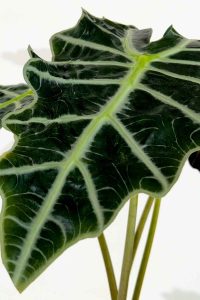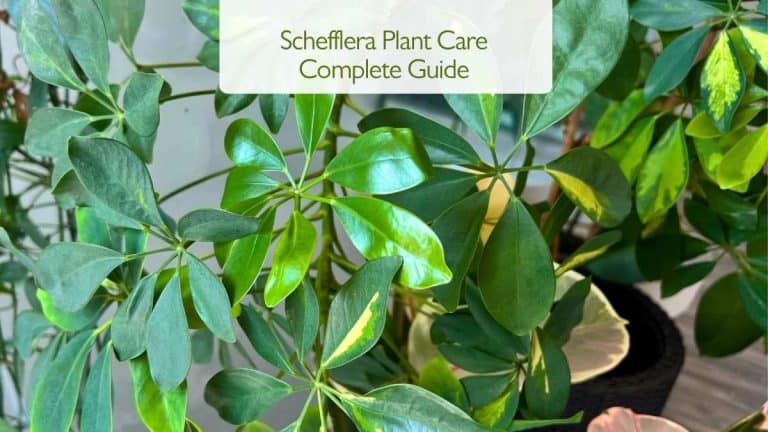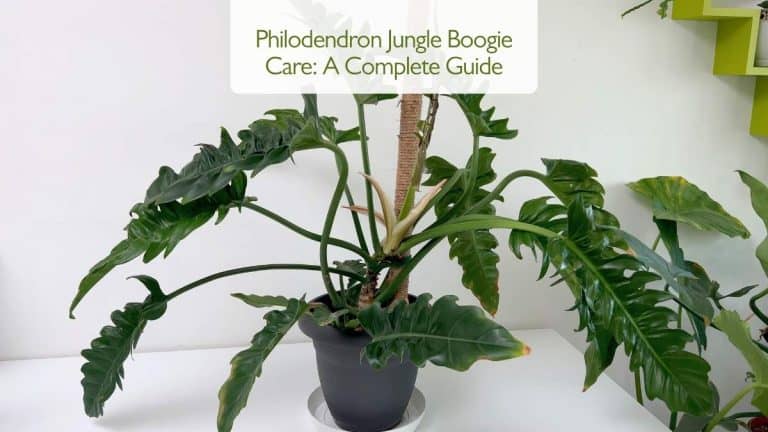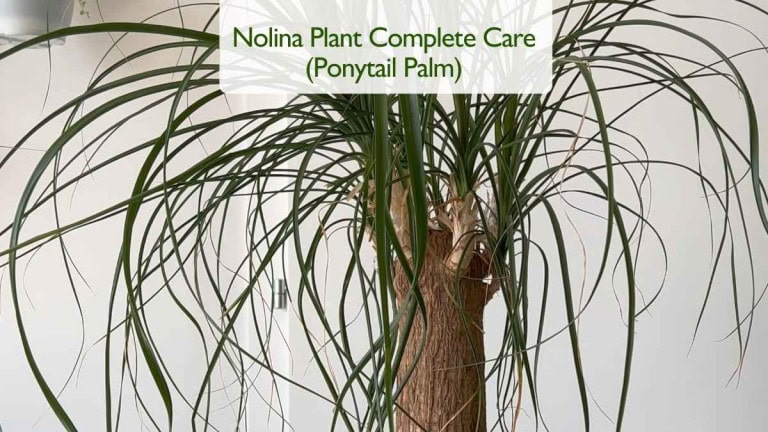Alocasia Amazonica Care: The Ultimate Guide to Thriving African Mask Houseplants
If you’ve been searching for Alocasia Amazonica care, you’re in the perfect place. In this comprehensive walkthrough, I’ll share everything I’ve learned from nurturing my own mother plant, medium‑sized specimen, and three adorable babies—from understanding its hybrid origins to mastering water, light, and humidity requirements. Whether you’re rescuing a dusty nursery find or expanding your collection, you’ll discover proven strategies for lush foliage, rapid new growth, and effortless propagation.
For a detailed visual tutorial and extra tips for Alocasia Amazonica care, be sure to watch my video below:
Click here to watch the video on YouTube
Name & Origin: The Hybrid Misnomer Behind Alocasia Amazonica
Although marketed as the “Amazonian” Alocasia, Alocasia Amazonica care actually centers on a man‑made hybrid: a cross between Alocasia longiloba and Alocasia sanderiana, first developed by Salvadore Mauro. Commonly called African Mask, Jewel Alocasia, or “Polly,” this plant never grew wild in South America. Its striking arrow‑shaped leaves, glossy dark front, and maroon‑purple undersides have made it a coveted indoor specimen worldwide.
Signature Foliage: What Your Leaves Reveal About Health
Alocasia Amazonica’s leaves are its crowning glory: up to a foot long, arrow‑headed, and etched with pronounced pale veins against deep green. The textured, matte‑finish backside contrasts in rich purple, creating multi‑dimensional appeal. Healthy leaves emerge as tight tubes and unfurl into broad, flat blades; any browning edges or yellowing surfaces immediately signal care adjustments—be it watering, humidity, or nutrient levels.

Water Requirements for Alocasia Amazonica Care
Mastering Alocasia Amazonica care begins with precise watering. This aroid prefers consistently moist—not waterlogged—soil. I water mine when the top inch feels dry, giving a thorough soak and letting excess drain completely. Room‑temperature water prevents shock, and pots with ample drainage holes are non‑negotiable. If you notice yellow leaves with soggy bases, you’ve likely overwatered; crisp, drooping foliage means it’s time for a drink. For an airtight watering routine across all houseplants, explore my Houseplants Watering Tips.
Light Conditions: Balancing Brightness without Burn
Bright, indirect light is essential to keep your Alocasia Amazonica vibrant. Direct midday sun can scorch, so I position mine just out of direct beams—behind sheer curtains or under dappled light. In winter, when daylight wanes, move it closer to a north‑ or east‑facing window; during summer, shift it back to prevent leaf bleaching. Prolonged low light yields leggy growth and smaller leaves, so aim for at least four hours of strong, filtered illumination daily. Very important step for Alocasia Amazonica care.
Humidity & Temperature: Mirroring the Rainforest Floor
High humidity (60–80%) and stable warmth (65–80 °F) are non‑negotiable for Alocasia Amazonica care. Indoor heating and air conditioning sap moisture, so I run a humidifier nearby and group my Alocasias on a pebble tray. Avoid misting, as water trapped in the textured leaf surface can invite fungal issues; instead, shower the plant every few months and gently towel‑dry afterward. Keep temperatures above 60 °F to prevent chill damage—Amazonicas hate drafts!
Soil Mix & Repotting Best Practices | Alocasia Amazonica care
A chunky, well‑draining mix is the foundation of Alocasia Amazonica care. I use my custom aroid blend—coco coir, orchid bark, and perlite—which balances moisture retention with airflow. You can also enhance a pre‑made potting mix by stirring in extra perlite and bark. Repot every one to two years in spring: choose a container just one size larger and gently refresh soil around the corms without burying them too deeply. For a step‑by‑step DIY aroid mix, check my Soil‑Free Aroid Potting Mix: The Best DIY Recipe for Healthy Aroid Plants.
Propagation: From Corms to New Plants
One of the most rewarding aspects of Alocasia Amazonica care is propagation via corm division. When repotting, you’ll discover small corms attached to the root mass—these are baby plants waiting to be separated. Remove gently and pot each corm in fresh aroid mix, keeping soil lightly moist until new growth emerges. For a detailed video guide on corm propagation—applicable to Alocasia Amazonica and other aroids—see my tutorial on Alocasia Regal Shield Propagation from Corms.
Fertilizing Your Alocasia Amazonica
Feed your Amazonica during spring and summer with a balanced liquid fertilizer diluted to half strength, applying every two to four weeks. Always water first to prevent root burn. In fall and winter, pause feeding to allow natural dormancy. Over‑fertilization causes salt buildup and leaf tip burn, so a light hand ensures steady, healthy growth.
Cleaning & Maintenance: Keeping Leaves Pristine
Dusty leaves block light and harbor pests. To maintain your Alocasia’s glossy sheen, gently brush away debris, then wipe each leaf with a soft, damp cloth. For extra polish and protection, try my Homemade Leaf Shine Recipe, which conditions foliage without harsh chemicals. A clean plant is a happy plant—free to absorb maximum light and fend off infestations.
Common Problems & Troubleshooting
- Yellow Lower Leaves: Natural aging or low humidity; prune as needed.
- Brown Edges: Sign of underwatering or dry air; adjust moisture and humidity.
- Root Rot: Caused by waterlogged soil; repot in fresh aroid mix with proper drainage.
- Pests (Spider Mites, Aphids, Mealybugs): Inspect regularly and treat with neem oil or insecticidal soap, testing on a single leaf first.
Explore More Music for Your Plants & Stay Connected!
Check out my Playlist: Music for Plants and find the perfect tunes to help your plants and yourself thrive.
Don’t forget to visit my YouTube Channel Plant House & Garden and subscribe — your support means the world to me!
Connect with me on social media for more plant care tips and music updates: Instagram | Facebook | X | Pinterest | Reddit | TikTok
Love plants? Love music? Don’t miss out on new updates — hit subscribe and follow now to keep your plants happy and your space vibrant!







